Ball Python Health Issues
April 15, 2021

Common Ball Python Health Issues
Ball pythons are one of the most popular snake species to own due to their calm nature and beautiful morphs (colors and patterns). Whether you are planning on purchasing one, or already own one, it is important to have a full understanding of the common health issues that ball pythons have so you can be better prepared to care for yours. Ball pythons have evolved to become excellent at hiding when they’re sick. This is because in the wild, a sick snake is an easier target than a healthy snake, and is more likely to be picked off by predators. This article will guide you through common ball python health problems, what signs to look for, and what causes them. If you have an emergency, you should call a reptile veterinarian.
Ball Python Mouth Rot
Medically referred to as “infectious stomatitis”, mouth rot is a bacterial infection that is typically caused by a small cut in the mouth, but can also occur due to improper husbandry such as the snake being kept in a dirty enclosure. Essentially, the tissues in your ball python’s mouth become severely inflamed and begin to rot. Oftentimes, a ball python with mouth rot will have thick saliva and yellow pus in and around their mouth, they will refuse food, and will breathe through their mouth. If you believe that your ball python has mouth rot, it is essential to make an appointment with an exotic vet right away.
Symptoms:
- Loss of appetite
- Yellow pus around mouth
- Open mouth breathing
- Bright red gums
- Drooling
- Swelling of the gums and face
Causes:
- Dirty enclosure
- Poor nutrition
- Food stuck in teeth
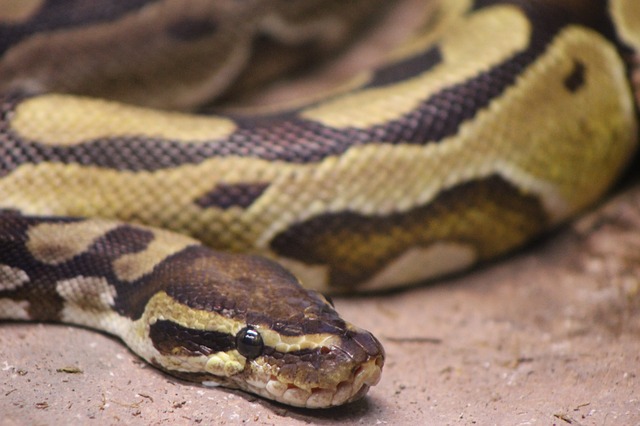
Mites on Ball Pythons
Snake mites can be a real disaster if you have a large collection of reptiles, however, they are much more manageable for the average keeper with one or two snakes. I have a complete guide on how to treat snake mites here if you would like to learn more. Snake mites are transferred from one reptile to another by hitching a ride on you! This is one reason why it is so important to wash your hands in between handling reptiles. Another essential way to prevent snake mites is through quarantine! When you bring home a new reptile, you usually don’t know if it has any diseases or parasites. It is important for you to quarantine that new reptile away from any reptiles you already own to prevent the spread of anything.
Symptoms:
- Tiny moving black dots on snake or in snake cage
- Constantly soaking in their water dish
- Loss of appetite
- Excessively rubbing against decor when not in shed
Causes:
- Coming in contact with a reptile that has mites
Dehydrated Ball Python
Ball pythons require a high humidity (between 50% - 70%), and when they are not constantly supplied with these humidity levels, they can quickly become dehydrated. Unfortunately, many ball python owners struggle to hold humidity in their snake’s enclosure leading to a dehydrated snake. Thankfully, there are a few ways to prevent humidity loss. You should always use coconut husk as a substrate for your ball python, as it is excellent at holding in humidity. Misting the enclosure daily (or as needed per the readings on your hygrometer) will help a bunch too. Assuming that your snake is being kept in a glass tank with a screen lid, another way to help combat humidity loss is to tin foil ¾ of the lid on your snake’s tank. To learn more, check out my complete guide to increasing humidity in ball python tanks!
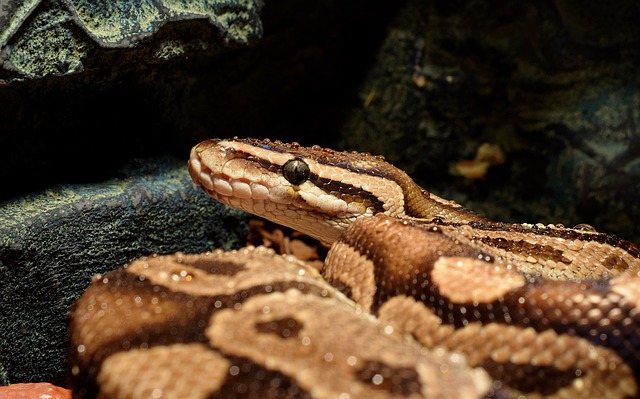
Symptoms:
- Dented eye caps
- Stuck shed or trouble shedding
- Wrinkled skin
Causes:
- Too low of humidity
- Snake isn’t drinking enough water
IBD in Ball Pythons
Inclusive body disease, commonly called IBD, is an infectious disease found in both boas and pythons. It is transmitted from snake to snake through a viral infection, and is another example of why it is so important to quarantine new reptiles before allowing them to come in contact with your current collection. Some boas are able to overcome the disease and become healthy-looking carriers of the virus (though most die within weeks), however, in pythons the disease is completely fatal, and there are currently no known treatments. “Stargazing” is one of the biggest symptoms, it's when the snake experiences muscle convulsions that cause the head to arch back, making the snake look like it is staring straight up. This should not be confused with periscoping, which is when your ball python raises its head and looks around. Stargazing is usually jerky, uncontrolled motion.
Symptoms:
- Stargazing
- Head tremors
- Loss of appetite
- Regurgitation
- Weight loss
- Trouble shedding
Causes:
- Direct contact between your snake and an infected snake
- Snake mites are known to transfer the disease as well
Respiratory Infection in Ball Pythons
Respiratory infections are a somewhat common health issue in ball pythons that are caused by inaccurate temperatures, incorrect humidity, and poor hygiene. Oftentimes a ball python with a respiratory infection will make wheezing sounds and have small bubbles coming out of their nose. Sometimes they will tilt their heads back to allow mucus to drain, but this action should not be confused with stargazing, as the head tilt is clearly controlled when draining mucus. If your husbandry is accurate there should be no reason to worry about your snake getting a respiratory infection. If you believe that your ball python has a respiratory infection you can make an appointment with an exotic vet, and they will prescribe you with the appropriate antibiotics to treat it with.
Symptoms:
- Wheezing sound when breathing
- Bubbles coming out of nostrils
- Stringy saliva
- Loss of appetite
- Acting lethargic
Causes:
- Dirty enclosure
- Low temperatures
- Inaccurate humidity
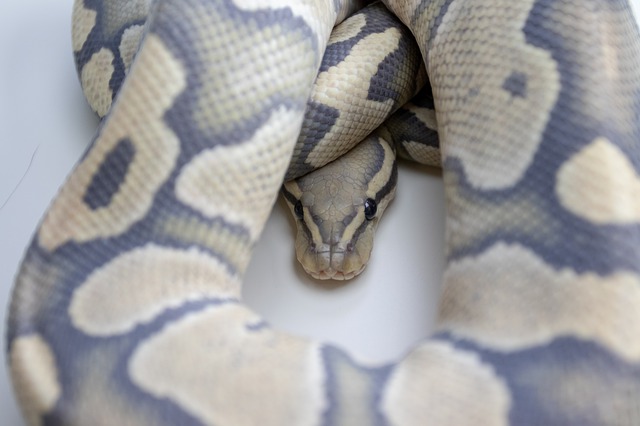
Nidovirus
Nidovirus is a virus that is most commonly seen in pythons, however, it has been known to affect other snakes as well. It creates deadly upper respiratory issues in ball pythons, and has been known to wipe out some people’s entire python collections. Unfortunately there is no current treatment for nidovirus. It's best to always be prepared and extra cautious to prevent nidovirus from affecting your ball pythons. You should always quarantine every reptile that comes into your home (even if the reptile has come from a reliable breeder) to prevent the spread of disease or parasites, and wash your hands in between handling multiple reptiles. I have a complete guide on how to quarantine snakes here.
Symptoms:
- Wheezing sound while breathing
- Mucus and excess saliva in mouth
- Mouth rot
- Open mouth breathing
- Red gums
Causes:
- Coming in contact with an infected snake
Check out The Complete Ball Python Care Sheet to learn how to supply your ball python with the best care!
Recommended Posts
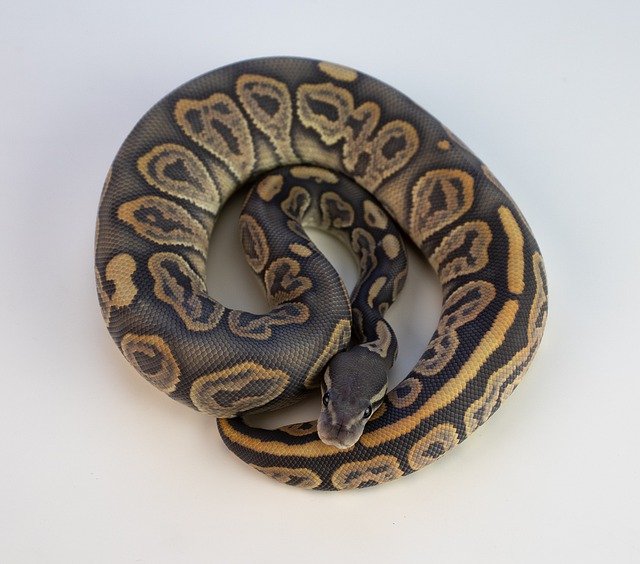
Ball Python Morphs With Problems
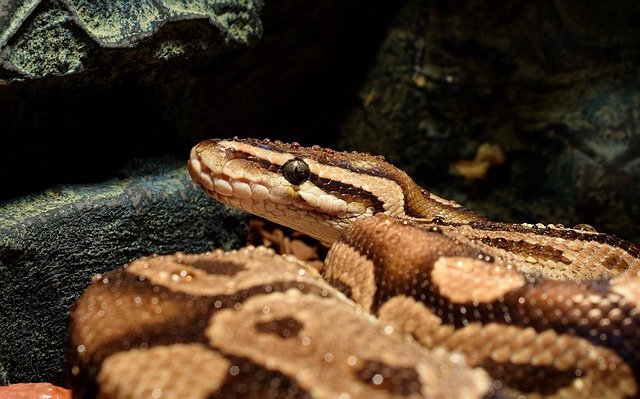
Complete Guide To Increasing Humidity In Ball Python Tanks
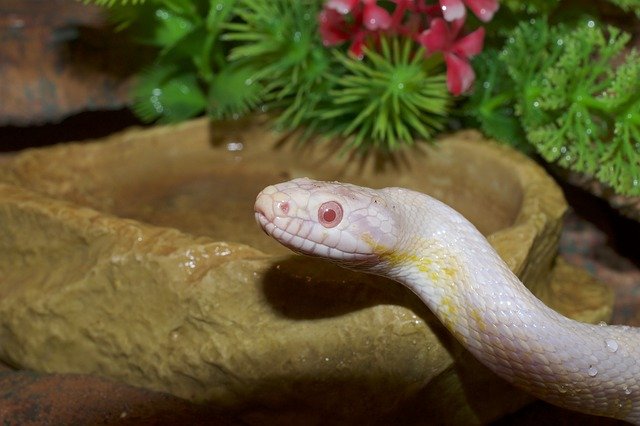
My Snake Has Mites! Now What?
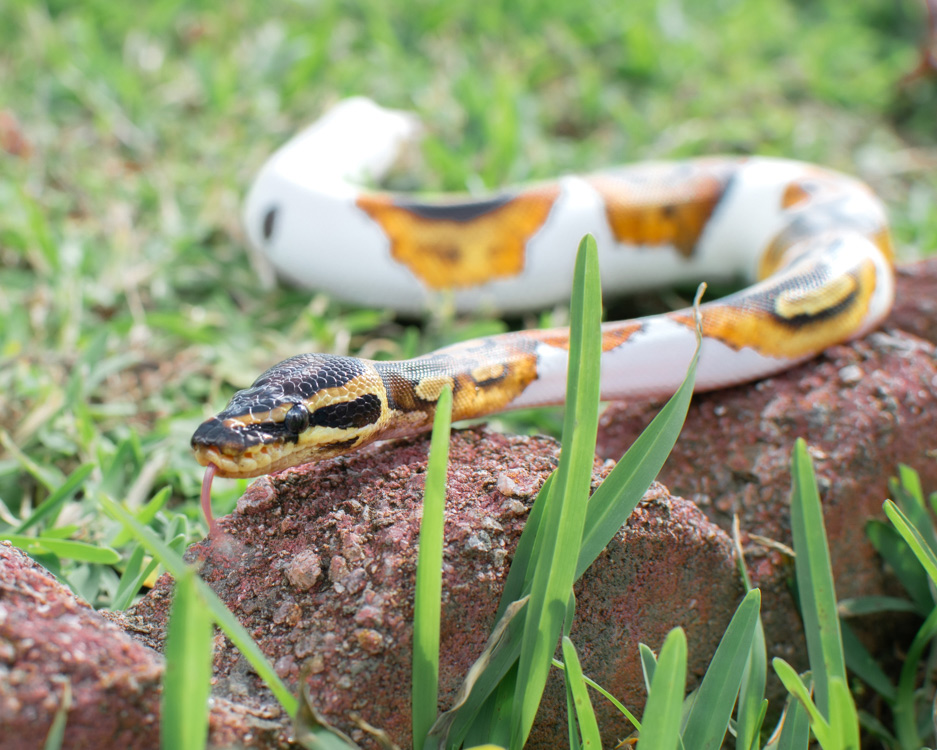
Complete Ball Python Care Sheet




Sending...